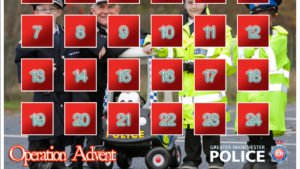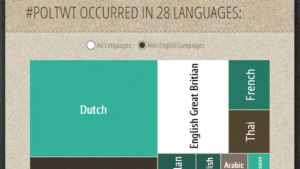This is the fifth in a series of posts based on the recent COMPOSITE report on police use of social media across Europe.
The Wisdom of the crowd
The last two posts in this series have examined the widespread take-up of social media by police forces across Europe in order to communicate more effectively with the public.
This post focuses on the benefits of this approach.
Once police have established a strong social media presence (which is amplified by their audience sharing information among their own social media circles like ripples on a pond), they can get requests for information out to large numbers of local people.
Social media warrants police attention
Both UK and German police have started publishing search warrants online as a matter of routine.
Hanover police had a history of very poor responses to search warrants which were publicised in the local press or posted in public places.
However, when they started using Facebook to publicise search warrants, they quickly found that they were much more likely to get information from the public. Even though the force only published a few messages every month, they soon passed 100,000 Facebook friends who commonly shared the police messages with their own friends.
Importantly, the police still asked people to use a regular police phone number to report information. So even though local people posted comments on Facebook about the need to find the criminal at large, actual information about a wanted person’s whereabouts was reported by phone which allowed officers to maintain their existing procedures to verify facts and to distinguish between useful and useless information.
Crowdsourcing information
UK police forces have become increasingly skilled at using a wide range of social media platforms in order to get as much useful information as possible.
The use of this approach in very high profile cases such as the Joanna Yeates murder in Bristol and the riots in English cities in August 2011 have led to the publication of requests for public information on social media sites becoming a mainstream police activity.
In the case of Joanna Yeates, Avon and Somerset Police used Facebook advertisements as a way of asking the police were information and also posted the video footage from CCTV cameras on YouTube.
After the riots, a number of police forces uploaded hundreds of photos of rioters onto Flickr and drove awareness of this drive to get criminals identified via Twitter campaigns.
A much more mundane example occurred last December when a police officer used Twitter to track down the owner of a lost iPad – after obtaining her name from a photo of a plane ticket.
The iPad was handed into Harrogate police station and PC Ed Rogerson (@hotelalpha9) managed to access photos including a flight ticket and several photos of the woman believed to be the owner. He tweeted some of the photos and used Twitter’s search facility and eventually tracked down the owner who lived 6000 miles away in Thailand.
How’s that for improving the international reputation of North Yorkshire police. Click here for the full story.
Conclusion
Overall, social media provides a powerful framework to ask the public for help in investigations.
While the responses, in high profile cases or the riots, can be numerous and create a lot data to deal with, they have often provided critical criminal information that could have not been gathered with traditional means.
Next week: Using social media for community policing.







